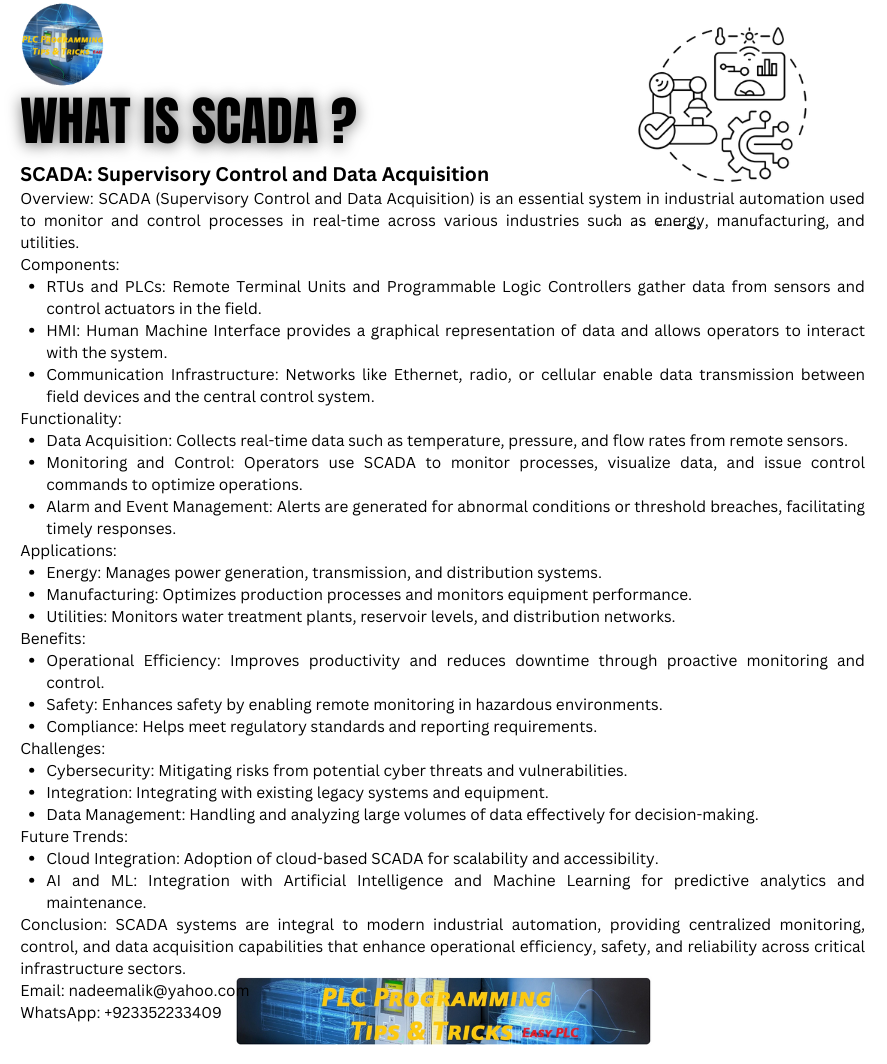
What is SCADA ?
SCADA (Supervisory Control and Data Acquisition)
SCADA is a type of industrial control system (ICS) used to monitor and control infrastructure and facility-based processes. These systems are essential for managing large-scale operations such as power generation and distribution, water treatment, oil and gas pipelines, manufacturing, and transportation systems. SCADA allows operators to monitor equipment and process conditions in real time, automate control processes, and collect valuable data for analysis.
Key Components of SCADA:
-
Human-Machine Interface (HMI):
This is the user interface that presents process data to a human operator. The HMI allows operators to monitor the system status and issue commands to control machinery or adjust process parameters. -
Supervisory System (SCADA Software):
This software runs on servers or control stations, collecting and processing real-time data from the field. It provides visualization, trending, alarm management, and historical data storage. -
Remote Terminal Units (RTUs):
RTUs are field devices that collect data from sensors and equipment and send it to the supervisory system. They can also receive control commands from the system to operate connected devices like valves or switches. -
Programmable Logic Controllers (PLCs):
PLCs are industrial computers that perform local control tasks. They're often used in conjunction with or instead of RTUs in SCADA systems due to their flexibility and reliability. -
Communication Infrastructure:
This includes the network (wired or wireless) that connects all SCADA components, enabling data exchange between field devices, control centers, and HMIs.
How SCADA Works:
SCADA systems gather data from sensors and control systems at remote sites, then transmit that data to a central computer. Operators view this data via the HMI and can make decisions or automate responses. For example, in a water treatment facility, SCADA might automatically adjust chemical dosing based on real-time water quality measurements.
Benefits of SCADA:
-
Real-time monitoring and control
-
Improved operational efficiency
-
Quick detection and response to issues
-
Data logging for maintenance and regulatory compliance
-
Remote access and control
Conclusion:
SCADA plays a critical role in modern industry by providing centralized control and insight into complex systems. As industries adopt more digital technologies, SCADA systems are increasingly integrated with IoT, cloud computing, and AI to enhance automation and predictive maintenance.
Would you like a diagram to visualize how SCADA systems work?
Leave Comment